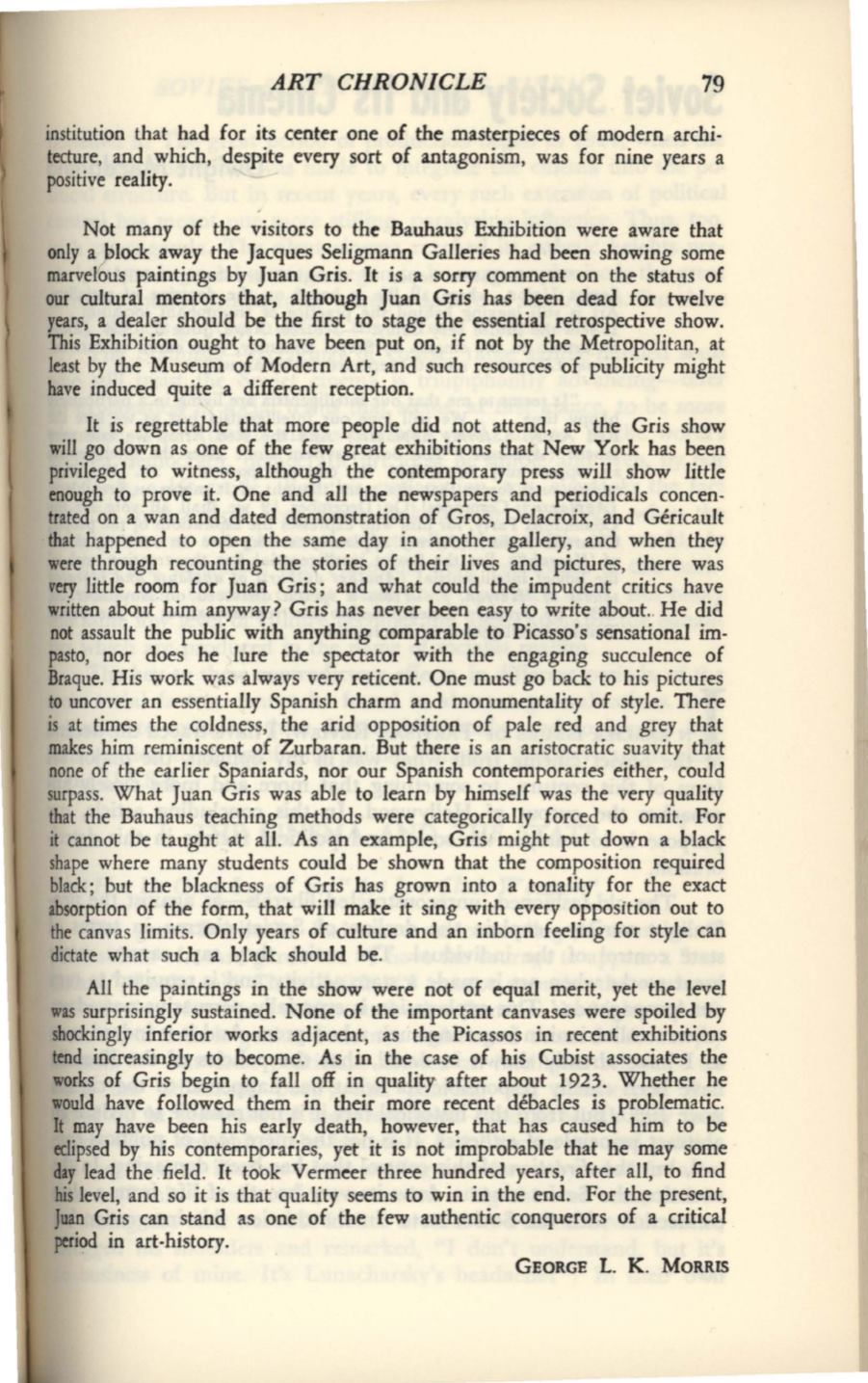
ART CHRONICLE
79
institution that had for its center one of the masterpieces of modern archi–
tecture, and which, despite every sort of antagonism, was for nine years a
positive reality.
Not many of the visitors to the Bauhaus Exhibition were aware that
only a plock away the Jacques Seligmann Galleries had been showing
some
marvelous paintings by Juan Gris. It is a sorry comment on the status of
our cultural mentors that, although Juan Gris has been dead for twelve
years, a dealer should be the first to stage the essential retrospective show.
This Exhibition ought to have been put on, if not by the Metropolitan, at
least by the Museum of Modern Art, and such resources of publicity might
have induced quite a different reception.
It
is regrettable that more people did not attend, as the Gris show
will go down as
one
of the few great exhibitions that New York has been
privileged to witness, although the contemporary press will show little
enough to prove it.
One
and all the newspapers and periodicals concen–
trated on a wan and dated demonstration of Gros, Delacroix, and Gericault
that happened to open the same day in another gallery, and when they
were through recounting the stories of their lives and pictures, there was
very little room for Juan Gris; and what could the impudent critics have
written about him anyway? Gris has never been easy to write about..
He
did
not assault the public with anything comparable to Picasso's sensational im–
pasto, nor does he lure the spectator with the engaging succulence of
Braque. His work was always very reticent. One must go back to his pictures
to uncover an essentially Spanish charm and monumentality of style. There
is at times the coldness, the arid opposition of pale red and grey that
makes him reminiscent of Zurbaran. But there is an aristocratic suavity that
none of the earlier Spaniards, nor our Spanish contemporaries either, could
surpass. What Juan Gris was able to learn by himself was the very quality
that the Bauhaus teaching methods were categorically forced to omit. For
it cannot be taught at all. As an example, Gris might put down a black
shape where many students could be shown that the composition required
black; but the blackness of Gris has grown into a tonality for the exact
absorption of the form, that will make it sing with every opposition out to
the canvas limits. Only years of culture and an inborn feeling for style can
dictate what such a black should
be.
All the paintings in the show were not of equal merit, yet the level
was surprisingly sustained. None of the important canvases were spoiled by
shockingly inferior works adjacent, as the Picassos in recent exhibitions
tend increasingly to become. As in the case of his Cubist associates the
works of Gris begin to fall off in quality after about 1923. Whether he
would have followed them in their more recent debacles is problematic.
It may have been his early death, however, that has caused him to be
eclipsed by his contemporaries, yet it is not improbable that he may some
day lead the field.
It
took Vermeer three hundred years, after all, to find
his level, and so it is that quality seems to win in the end. For the present,
Juan Gris can stand as one of the few authentic conquerors of a critical
period in art-history.
GEORGE
L.
K.
MORRIS


